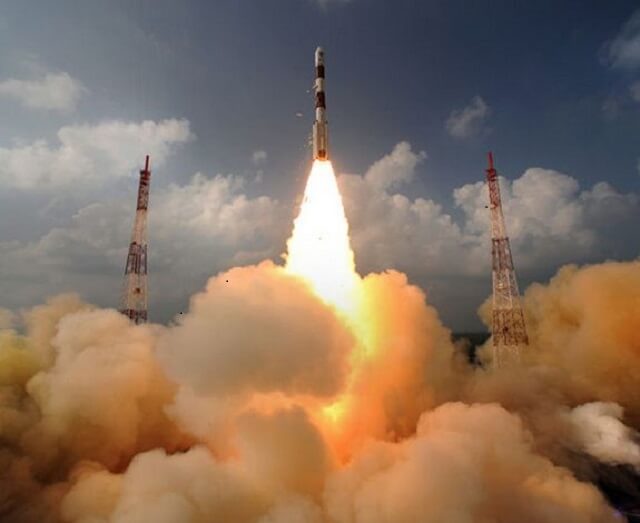Indigenization of technology refers to the process of adopting and adapting foreign technology to suit the needs and requirements of a particular country or region. The term ‘Indigenous’ refers to something native or inherent to a specific area or region. When it comes to technology, it means developing and customizing it to fit the specific cultural, social, and economic context of a particular country.
In recent years, the concept of Indigenization of technology has gained significant importance in developing countries. These countries now focus on developing their technology rather than relying on imported technologies. In this article, we will discuss the importance of the Indigenization of technology, its benefits and challenges, and how it can help in economic development.
Importance of Indigenization of Technology
Indigenization is developing and adapting technology to fit a particular country or region’s specific cultural, social, and economic context. It is essential for several reasons.
Firstly, it helps reduce the dependence on foreign technology, which can be expensive, difficult to maintain, and unsuitable for local conditions. Countries can create more appropriate and affordable solutions for their needs by developing and customizing their technology.
Secondly, the Indigenization of technology promotes the growth of the local technology industry, which can create jobs and contribute to the country’s overall economic development. Indigenization is especially important in developing countries, where unemployment is a significant problem.
Thirdly, the Indigenization of technology makes countries more self-reliant and less vulnerable to external factors such as changes in foreign policy, trade regulations, or economic conditions. Developing their own technology allows countries to control their technological destiny and become more competitive in the global market.
Overall, the Indigenization of technology is crucial for the economic development of developing countries. It helps reduce the technological gap between developed and developing countries and promotes global economic growth.
Indigenization of Technology in India Context:
Indigenization of technology in India refers to developing and customizing technology to meet the country’s specific needs. India has a large and growing population, diverse geography, and unique cultural and social factors, which necessitate the creation of technology solutions tailored to its specific needs.
One of India’s most prominent examples of Indigenization of technology is the development of the Indian Space Research Organization (ISRO). The ISRO has developed several successful satellites using Indigenous technology, including the Mangalyaan Mars mission. Indigenization has allowed India to become a leader in the space industry and reduced its dependence on foreign technology.
Another example is the development of the Indian Institutes of Technology (IITs), which are renowned for their excellence in engineering education and research. These institutions have produced many talented engineers who have contributed to developing Indigenous technology in various fields.
The Indigenization of technology has also played a significant role in developing India’s defense industry. The Defense Research and Development Organization (DRDO) has developed several Indigenous defense technologies, including the Agni missile, the Tejas fighter jet, and the Arjun tank.
In recent years, the Indian government has placed a greater emphasis on the Indigenization of technology, with initiatives such as the Make in India program and the Atmanirbhar Bharat Abhiyan. These programs aim to promote the development of Indigenous technology and reduce dependence on foreign technology.
Overall Indigenization of technology is essential to India’s economic and technological development. It has allowed the country to become more Self-reliant and less dependent on foreign technology, contributing to its growth and success in various fields.
Indigenous Technologies developed in India:
India has a long history of developing Indigenous technologies in various fields, including Space research, defense, Healthcare, Agriculture, and Renewable energy. Some of the unique Indigenous technologies developed in India are:
- Mangalyaan Mars mission: The Mars Orbiter Mission, also known as Mangalyaan, was India’s first Interplanetary mission to Mars. In November 2013 ISRO launched Mangalyaan Mars mission using Indigenous technology and entered Mars’ orbit in September 2014.

- Indian Regional Navigation Satellite System (IRNSS): The Indian Space Research Organization (ISRO) dveloped the IRNSS, a navigation system to provide accurate positioning and timing services in India and its surrounding regions. It consist of seven satellites and launched using Indigenous technology.
- Tejas fighter jet: The Tejas is a Lightweight, Multi-role fighter jet developed by the Aeronautical Development Agency (ADA) and Hindustan Aeronautics Limited (HAL). It uses Indigenous technology and is the first Supersonic fighter jet developed by India.
- Arjun tank: The Combat Vehicles Research and Development Establishment (CVRDE) developed the Arjun tank, a man battle tank using Indigenous technology. It is one of the most advanced tanks in the world and is currently in service with the Indian Army.
- Aadhaar: Unique Identification Authority of India (UIDAI), developed a Biometric identification system Aadhaar. It assigns a unique 12-digit identity number to every resident of India based on their Biometric and Demographic information.
- UPI: National Payments Corporation of India (NPCI) developed Unified Payments Interface (UPI) payment system. Let users instantly transfer money between bank accounts using a mobile phone.
- Chitra: Chitra is a Low-cost, Portable device developed by Indian scientists to detect malaria. It uses a microfluidic chip to detect the presence of the malaria parasite in a blood sample.
- Drones: India has developed Indigenous drone technologies, including the Lakshya and Nishant uncrewed aerial vehicles (UAVs). These drones are used for surveillance, reconnaissance, and target acquisition.
- EVMs: Electronic Voting Machines (EVMs) were first introduced in India in the 1990s to streamline the voting process and reduce electoral fraud. India is now one of the few countries that use EVMs on a large scale during elections.
- BrahMos: BrahMos, a Supersonic cruise missile developed jointly by India and Russia. It is one of the fastest missiles in the world and can be launched from land, sea, and air.
- RITHVI 2 is an Indigenously developed Surface-to-surface Short Range Ballistic Missile[SRBM]. It was developed by the Defence Research Development Organisation[DRDO] of India under its Integrated Guided Missile Development Programme[IGMDP]. It was India’s first Ballistic missile.
- K9-Vajra is a 155mm, 52 caliber tracked self-propelled howitzer built in India by Larsen & Toubro (L&T) with technology transferred from south korean defense major Hanwha defense.
- Agni 5 is a surface-to-surface ballistic missile developed by using indigenous technology under the Integrated Guided Missile Development Programme[IGMDP]. The missile can hit the target beyond the 5000 km range.
- A chennai based start-up company, agnikul cosmos, inaugurated India’s first private space vehicle launchpad.
- India’s space technology start-up Skyroot aerospace made history by sending India’s first privately developed rocket Vikram-S, developed using indigenous technology into space under the prarambh mission.
- India’s first Indigenously built and designed aircraft carrier INS VIKRANT makes India Self-reliant. Vikrant is the largest naval ship that built in india. We join the band of nations that have demonstrated such capability with significant countries like the US, UK, France, Russia, Italy, and China.
- The Union minister of science & technology has launched India’s first Hydrogen Fuel Cell Bus developed using indigenous technology. The HFC developed by the Council of Scientific and Industrial Research[CSIR] and KPIT, an Indian multinational corporation. National Hydrogen Energy Mission is associated with HFC.
- Indian Defence Research and Development Organisation[DRDO] has successfully test-fired Laser Guided Anti Tank Guided Missiles, developed using indigenous technology. These are primarily designed to destroy heavily armored military vehicles.
- Prime minister Narendra Modi recently inaugurated the Liquid Nano Urea plant at Kalol, Gujarat. Indian Farmer Fertiliser Cooperative Limited[IFFCO] developed it using indigenous technology. It is an alternative to conventional Urea.
These are just a few more examples of the many Indigenous technologies that developed in India. The country has a rich tradition of Innovation. It is continuing to invest in research and development to create new solutions that meet the specific needs of its people.
Advantages of Indigenization of Technology:
There are several advantages to the Indigenization of technology:
Indigenous Technology for Self-Reliance:
Indigenization of technology allows a country to reduce its dependence on foreign technology and become Self-reliant. It can be especially important in strategic industries like defense or critical Infrastructure.
Indigenization of Technology: Driving Cost Savings through Local Innovation
Developing Indigenous technologies is often more cost-effective than importing technology from other countries. Indigenization can lead to significant government, business, and consumer savings.
Promoting Job Creation through Local Innovation
Indigenization of technology can create jobs in research, development, manufacturing, and support industries. It helps to boost the local economy and reduce unemployment.
Indigenization of Technology: Customizing Solutions for Local Needs
Indigenous technologies tailored to meet the country’s and its people’s specific needs. this can lead to better performance, higher reliability, and greater user satisfaction.
Indigenization of Technology: Fostering Innovation through Local Knowledge
Indigenization of technology can stimulate innovation and creativity as researchers and developers work to solve unique challenges and develop new solutions.
Unlocking Local Knowledge for Innovation and Development
Developing Indigenous technologies can lead to the creation of new knowledge and expertise within the country. Indigenization can help to build a skilled workforce and increase the country’s competitiveness in the global market.
Promoting National Pride through Local Innovation”
Indigenization of technology can foster a sense of national pride and identity, as people take pride in their country and its people’s achievements.
Overall, the Indigenization of technology can help a country to become more self-sufficient, innovative, and competitive. While it also creating jobs, saving costs, and improving the quality of life for its citizens.
Conclusion:
In conclusion, the Indigenization of technology has played a crucial role in developing India and other countries worldwide. Developing Indigenous Technologies allows countries to become more Self-reliant, save costs, create jobs, and Stimulate innovation.
Moreover, the Indigenization of technology can help address a country’s unique challenges and needs. Indigenization leads to better performance, higher reliability, and greater user satisfaction.
As technology continues to evolve, it will be necessary for countries to continue investing in research and development to create new solutions that meet the specific needs of their people.
Indigenization of technology will remain a critical component of this effort, helping to drive progress and promote sustainable development in the years ahead.
For more articles visit: 21Hashtags
